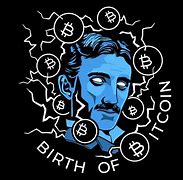The Birth of Bitcoin
Introduction
In a world where traditional finance often feels cumbersome and outdated, Bitcoin emerged as a beacon of innovation. This digital currency, born from a desire for freedom and autonomy, has transformed how we think about money. But what exactly is Bitcoin, and how did it come to be? Buckle up as we embark on a journey through the fascinating history of Bitcoin, exploring its origins, the technology behind it, and its impact on the financial landscape.
What is Bitcoin?
Defining Bitcoin
Bitcoin is a decentralized digital currency that allows people to send or receive money over the internet without relying on a central authority like banks or governments. It operates on a technology called blockchain, which is essentially a public ledger that records all transactions transparently and securely.

The Concept of Cryptocurrency
Cryptocurrency refers to digital or virtual currencies that use cryptography for security. Unlike traditional currencies issued by governments (like the US dollar or euro), cryptocurrencies are typically decentralized and based on blockchain technology. Bitcoin, introduced in 2009, is the first and most well-known cryptocurrency.
The Genesis of Bitcoin
The Enigmatic Satoshi Nakamoto
The story of Bitcoin begins with an individual or group using the pseudonym Satoshi Nakamoto. In October 2008, Nakamoto published a white paper titled “Bitcoin: A Peer-to-Peer Electronic Cash System,” outlining the concept of a decentralized currency that could operate without intermediaries.
The Birth of the Blockchain
On January 3, 2009, Nakamoto mined the first block of the Bitcoin blockchain, known as the Genesis Block. This block contained a message referencing a newspaper headline about bank bailouts, hinting at Bitcoin’s purpose as an alternative to traditional banking systems.

Early Development and Adoption
The First Transaction
The first real-world transaction using Bitcoin occurred on January 12, 2009, when Nakamoto sent 10 BTC to computer scientist Hal Finney. This marked a significant milestone in Bitcoin’s journey from theory to practice.
The First Purchase: Bitcoin Pizza Day
Fast forward to May 22, 2010—this day is now celebrated as Bitcoin Pizza Day. A programmer named Laszlo Hanyecz made history by spending 10,000 BTC on two pizzas. At that time, this transaction was worth about $41! Today, those pizzas would cost millions in BTC value. This event highlighted Bitcoin’s potential as a medium of exchange.

The Technological Backbone: Blockchain
Understanding Blockchain Technology
Blockchain is the backbone of Bitcoin. It’s a distributed ledger that records all transactions across a network of computers. Each block contains several transactions and is linked to the previous one using cryptographic hashes, ensuring security and integrity.
How Transactions Work
When you send Bitcoin to someone, your transaction is broadcasted to the network. Miners then validate these transactions by solving complex mathematical problems through a process called Proof-of-Work (PoW). Once validated, transactions are added to the blockchain.
Challenges and Controversies
Early Skepticism
Despite its innovative nature, Bitcoin faced skepticism from both the public and financial institutions. Many viewed it as a speculative bubble or a tool for illegal activities due to its anonymous nature.
The Silk Road Incident
Bitcoin gained notoriety when it became associated with the Silk Road—a dark web marketplace where illegal goods were traded using BTC. This association led to increased scrutiny from governments and regulators worldwide.
Growth and Recognition
The Rise of Altcoins
As Bitcoin gained traction, other cryptocurrencies began to emerge—collectively known as altcoins. Coins like Litecoin and Ripple offered variations on Bitcoin’s model, aiming to improve transaction speeds or enhance privacy features.
Institutional Adoption
In recent years, institutional interest in Bitcoin has surged. Major companies like Tesla and Square have invested in BTC, legitimizing it as an asset class. Additionally, financial products like Bitcoin ETFs (Exchange-Traded Funds) have made it easier for investors to gain exposure to this digital currency.
The Economic Impact of Bitcoin
A New Store of Value
Bitcoin is often referred to as “digital gold.” Its limited supply—capped at 21 million coins—creates scarcity similar to precious metals. Many investors view it as a hedge against inflation and economic instability.
Changing Financial Paradigms
Bitcoin has prompted discussions about the future of money. It challenges traditional banking systems by offering an alternative that prioritizes user autonomy and privacy over centralized control.
Current Trends in Bitcoin
Volatility and Market Dynamics
Bitcoin’s price has experienced significant volatility since its inception. From being valued at mere cents in its early days to peaking near $64,000 in late 2021, its price fluctuations continue to attract traders and investors alike.
Environmental Concerns
The energy consumption associated with Bitcoin mining has raised environmental concerns. Critics argue that the PoW mechanism consumes too much electricity; however, proponents highlight ongoing efforts to transition towards more sustainable practices.
The Future of Bitcoin
Technological Innovations
As technology evolves, so does Bitcoin. Developments like the Lightning Network aim to improve transaction speeds and reduce fees by creating off-chain payment channels.
Regulatory Landscape
The regulatory environment surrounding Bitcoin remains uncertain but is evolving rapidly. Governments worldwide are grappling with how to regulate cryptocurrencies while fostering innovation—a delicate balance that will shape the future of digital currencies.
Read This: The Evolution of Fashion Trends: A Look Back at the Last Decade
Conclusion
The birth of Bitcoin marks a significant turning point in our financial history—a digital revolution that challenges conventional notions of money and value. As we navigate this ever-evolving landscape, it’s essential to recognize both the opportunities and challenges presented by this groundbreaking technology. Whether you view it as an investment opportunity or a means of financial freedom, one thing is clear: Bitcoin has forever changed our relationship with money.
FAQs
1. What is Bitcoin?
Bitcoin is a decentralized digital currency that allows peer-to-peer transactions without intermediaries like banks or governments.
2. Who created Bitcoin?
Bitcoin was created by an individual or group using the pseudonym Satoshi Nakamoto in 2008.
3. How does blockchain work?
Blockchain is a distributed ledger that records all transactions across multiple computers securely through cryptographic hashes.
4. Why is Bitcoin considered “digital gold”?
Bitcoin is referred to as “digital gold” because it has a capped supply (21 million coins), creating scarcity similar to precious metals.
5. What are some challenges facing Bitcoin?
Challenges include regulatory scrutiny, environmental concerns regarding mining energy consumption, and price volatility impacting investor sentiment.
Meta Description
Discover the fascinating journey of Bitcoin from its mysterious origins with Satoshi Nakamoto to becoming a revolutionary digital currency reshaping finance today!

